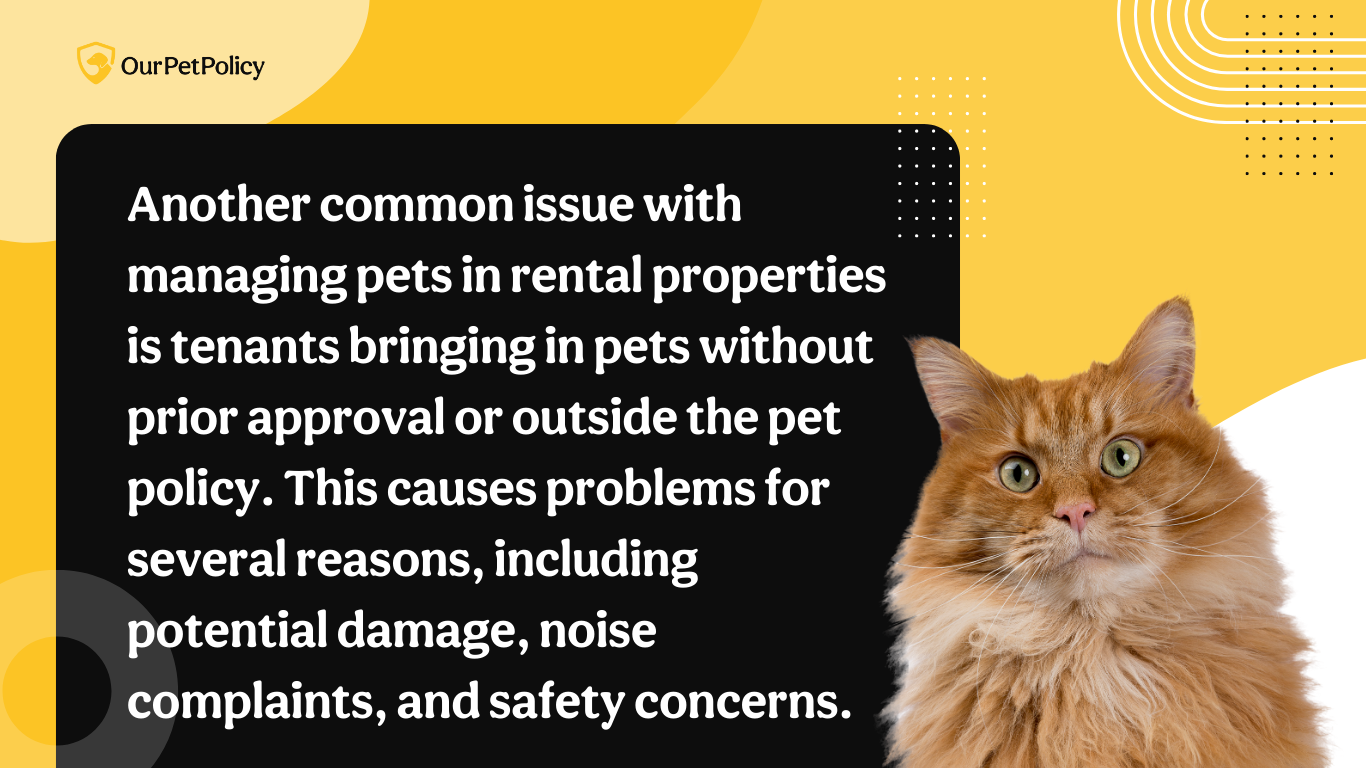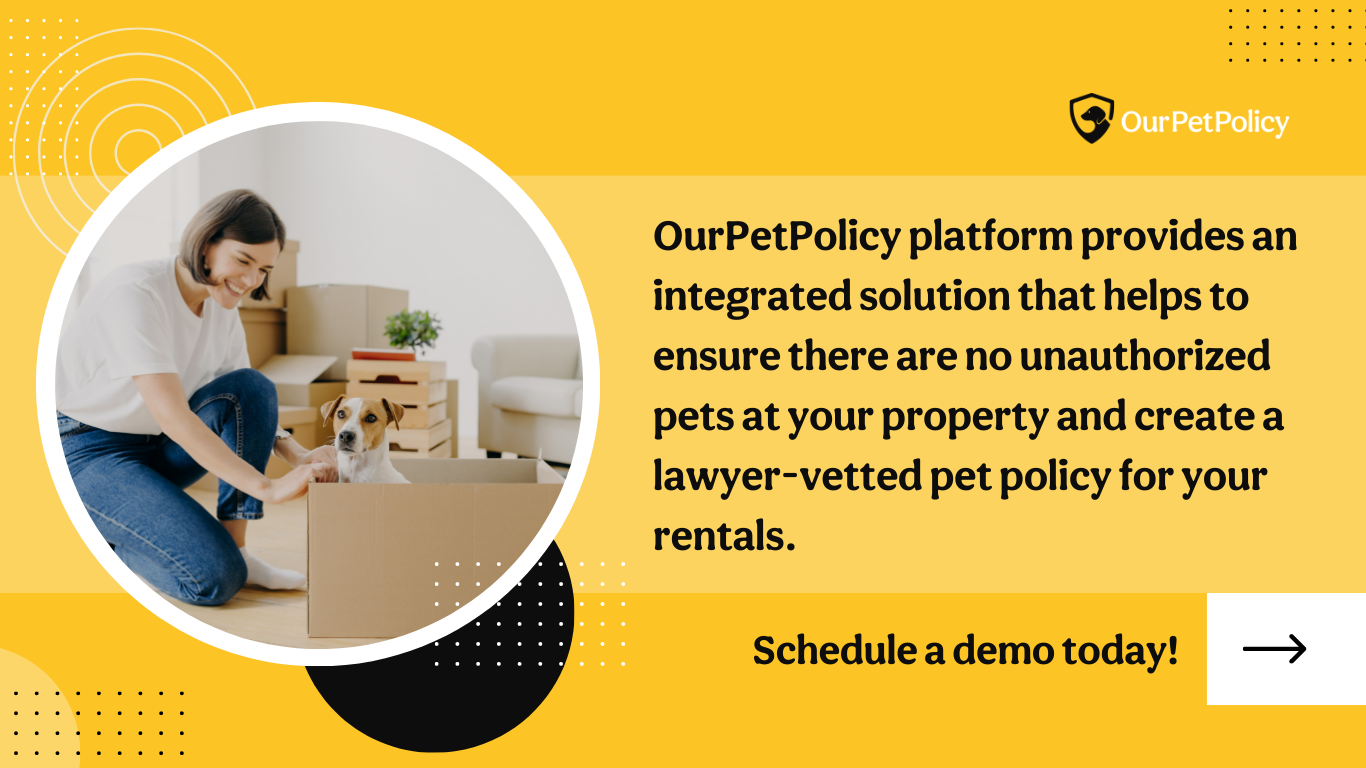As the number of pet owners continues to rise, property managers face the challenge of finding ways to accommodate tenants with pets. According to recent studies, more than 33% of households in the United States have at least one pet. Property managers can’t afford to ignore this growing segment of the population.
Allowing pets in rental properties can provide numerous benefits for both property managers and tenants. For property managers, it can increase their pool of potential renters and help reduce vacancy rates. For tenants, allowing pets can provide companionship, increase their sense of security, and improve their overall quality of life.
However, with these benefits, property managers must ensure pets are well-behaved and do not damage the property or disturb other tenants. They also need to handle complaints or issues.
Therefore, effective pet management is crucial for property managers to maintain a positive relationship with tenants and ensure the success of their rental properties.
1. Noise Complaints
One of the most common complaints about pets in the building is the noise they create. These include darks barking, cats meowing, and even birds cawing. Unfortunately, noise complaints can be challenging to address as they are subjective. However, as a property manager, addressing these complaints as best you can is essential. This not only helps to maintain a comfortable living environment for all tenants but can also reduce legal liabilities and potential damage.
The most important part of dealing with noise complaints is setting clear expectations from the outset that all tenants are aware of. First, this should be mentioned in the lease agreement but can also be supported by providing a friendly reminder to tenants. There are also resources property managers can provide to tenants to help address the issue, including information on noise-reducing techniques, training programs, and products.
If the issue becomes severe enough, it may become necessary to issue warnings and fines to tenants who repeatedly violate the pet policies. However, always be sure this is done consistently and fairly, according to the lease agreement and local laws. This is also where pet management software can be helpful. With a centralized system to track and respond to complaints, you can more quickly and consistently respond and take the appropriate action. Plus, the software can provide a channel for residents to access helpful resources and information to address noise on their own.
2. Damage to Common Areas
Damage caused by pets can become a significant concern for property managers, as it can be costly to repair, affecting the property's overall value. Some typical damage caused by pets is scratching and staining on carpets or walls. However, addressing damage can be difficult as it can be hard to attribute it to a specific pet.
The first thing to do, like with noise complaints, is to implement clear policies and expectations for all tenants regarding their pets. This can include guidelines for cleaning up after them and repair requirements for tenants should something get damaged. Regular inspections are also helpful to keep on top of damage and address it promptly.
You can also consider charging pet deposits or fees to help cover damage costs. This incentivizes tenants to take better care of their pets and minimize overall damage.
Finally, you can use pet management software to help track and address damage caused by pets. The system can track and document damage, making it easier to address issues.
Plus, it can streamline charging and collecting pet deposits and fees.
3. Unauthorized Pets
Another common issue with managing pets in rental properties is tenants bringing in pets without prior approval or outside the pet policy. This causes problems for several reasons, including potential damage, noise complaints, and safety concerns.
Unfortunately, detecting and addressing unauthorized pets can be challenging, as seeing them without proper documentation can be difficult. However, there are a few solutions that can help. The number one way is educating tenants on the pet policy and its consequences. From the leasing process onward, clear communication is always the best first step. If you’re clear about the fines or other punishments, this should deter most tenants from breaking the rules. Another step to consider is regular inspections, which can detect unauthorized pets. Property managers can schedule these for signs of pets, such as food bowls and pet hair.
Finally, you can use pet management software, such as OurPetPolicy to help with this problem. The centralized documentation can help track and detect pet policy violations, making consistent enforcement easier.

4. Lack of Compliance with Pet Policies
Another common problem is the lack of compliance with pet policies. Some of the most commonly violated policies are not cleaning up after their pets, not keeping pets on a leash, and failing to follow the rules for pet behavior in common areas. Addressing these are important for the long-term success of the living environment. However, as has been the theme, enforcing these policies can be difficult, as it’s hard to monitor who is at fault. We can look through some solutions, though.
As always, the first step is setting clear expectations with your tenants. The more information and education you can provide, the better the chances there won’t be any misunderstandings. If there is a lack of compliance, then it’s potentially time to issue warnings or even fines for repeat offenses. Property managers can incentivize tenants to follow pet policies and reduce the risk of violations by establishing consequences early on. These must be done consistently, or tenants will think favoritism is at play.
Finally, you can use pet management software to help track and document violations, making knowing when to take action easier. It can also streamline issuing warnings and fines, saving time and money.
5. Difficulty Collecting Pet Fees and Deposits
Finally, collecting pet fees and deposits when they’re due can sometimes be challenging. Tenants often can’t see the value in these extra fees, or may just not have the funds available.
First, it's important to be open about how these deposits help protect everyone in the building. But second, it’s also important to set clear boundaries about the consequences for non-payment. You should clarify in the lease agreement that the fees are both required and the consequences for non-payment are, for example, late fees and, eventually, legal action.
You can also offer alternative payment methods. This can make it easier for some currently struggling tenants, preventing them from leaving unnecessarily. In addition, payment plans can be set up with the right pet management software, making the whole process easier.
The Bottom Line
To cap things off, pet management for properties will always have its challenges, but with effective policies, property managers can always find solutions. To help, pet management software for properties can streamline the process, providing an easy, central system to track and respond to complaints, document damage, and violations, and even collect pet fees and deposits. By addressing these specific challenges, property managers can ensure that all the tenants and their pets can coexist safely and comfortably in their rental spaces.
Landlord Tech specializes in providing digital tools to help property owners and managers successfully manage pets in their properties. Our OurPetPolicy platform provides an integrated solution that helps to ensure there are no unauthorized pets at your property and create a lawyer-vetted pet policy for your rentals. If you're looking for an immediate return on investment, and peace of mind managing pets on your properties, then it's time to consider OurPetPolicy. Schedule a demo with us today.

